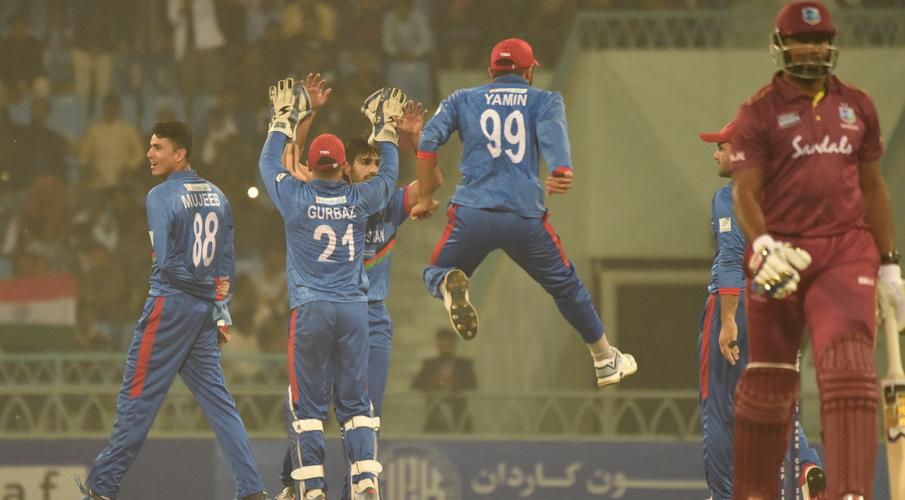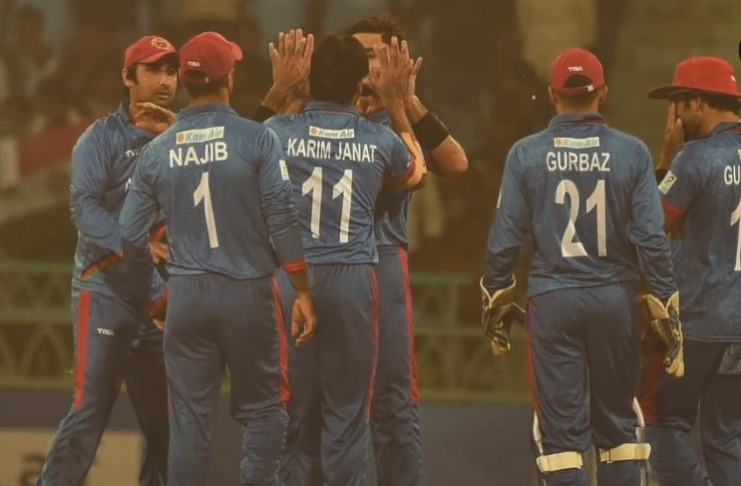The Second T20 of the series finally brought about the long-awaited Afghanistan resurgence, surprisingly at the back of a low scoring contest as Afghanistan blanked the West Indies comfortably by 41 runs and importantly raised questions of West Indies’ abilitiy to chase totals in closely-fought contests.
Winning the toss and electing to bat first, Afghanistan, with their backs against the wall, having lost all four limited-overs contests on the trot immediately seemed a different unit altogether from ball one of the contest.
As Hazratullah Zazai, arguably among the most dangerous batsmen in the format, cleared his front leg and freed his arms in sending Jason Holder’s maiden delivery at least ten rows back into the stands, the West Indians were served an early reminder of what was to follow; a fighting comeback by the tigers in the series.
Later on, a clinical display of medium pace and spin bowling crippled the Windies batsmen for runs, restricting their freedom to play, a team effort that earned Afghanistan the triumph that leaves the final deciding T20 an ‘all to play for’ contest.
But what were the big talking points from the Second T20 between Afghanistan and the West Indies?
Karim Janat’s bowls a dream spell

At a time where the likes of Rashid Khan, Mohammad Nabi, Gulabdin Naib and importantly, Mujeeb up the order would’ve been enough to succeed in keeping the West Indian batsmen in check, the often understated Karim Janat came out of nowhere and compressed the Windies batting making them appear like a batch of amateurs.
It was almost as if Karim Janat, with the best figures ever by an Afghan bowler against the West Indians- 4 overs, 11 runs, 5 wickets- came out of syllabus for the puzzled Caribbean batters.
Making effective use of his medium pace, often variating between the back of the length deliveries, Janat restricted the Windies batsmen, paint brushing their flair with restraint, putting a complete brake on their scoring.
What was most impressive was that of his 24 deliveries, Janat succeeded in delivering 15 dot balls.
Top and middle-order failure for West Indies

While on the face of it an ask of 148 can never look too daunting for any abled team, but when you are faced with an attack that has several mystery spinners of the ability of Mujeeb and Rashid, even a modestly competitive total can seem out of reach.
What didn’t help the West Indies, ever heavily-reliant on Evin Lewis giving them a flying start was the total capitulation of their top and middle order.
You know you are in for a tough night when the starting five contribute no more than 50 runs among them and what hurt the West Indies the most during their unsuccessful run-chase was the failure of their batsmen to collect runs from the go.
Brandon King once again failed to impress, scoring no more than 12. Hetmyer departed early as well, thus increasing the pressure on Lewis to attack alone.
By the time the eighth over of their batting inning was completed, the Windies batsmen had together copped up 26 dot balls. How were they to succeed against Rashid and company with an ask of well over 10 an over?
Excellent recovery by Afghan batsmen during their death overs

Perhaps one of the most underrated but important talking points from the Second T20 between Afghanistan and the West Indies was the excellent recovery sported by the team batting first.
For once, you would’ve thought that after posting 16 runs in the very first over, the Afghanistan batsmen should’ve easily capitulated on a flying start to have scored far more than where they reached in the 15 overs. But with the scorecard reading 100 down with 6 wickets with only 5 overs to go, it seemed that Afghanistan were losing the plot.
And that’s precisely where a lower-order recovery began to take place as the likes of Najib and Gulabdin Naib began expressing themselves, capitalizing on loose deliveries, converting the 1s into 2s.
In the end, the duo joined hands to score a valuable 44-run stand for the seventh wicket which rescued an embattled Afghan total, the side succeeding eventually to put up a competitive 147 on the board in the end.
Kesrick Williams’ bowling, the lone respite for Windies

Kesrick Williams, who took a vital 3-for against Afghanistan in the Second T20, was the pick of the Caribbean bowlers in a contest that produced no smiles for the West Indians but plenty of cheer for the Afghan tigers and their impassioned fans.
In bowling a full spell of 4 overs with near perfection boasting of a tightly controlled line and length, Williams rewarded the faith of his selectors by picking the key wickets of the two dashing openers- the dangerous Zazai and the unpredictable Gurbaz.
His twin successes, both of which came off successive deliveries threatened to turn the contest and nearly succeeded so, in his team’s favor before Afghanistan’s lower order kept the Windies bowlers in check.
But for his patient and controlled bowling, helping the useful right-armer collect 6 wickets with another contest to go in the series, Kesrick’s effort was among the big talking points from the Second T20 between Afghanistan and the West Indies.
Entire Afghanistan team contributing as one unit

The real beauty in the triumph of any cricketing outfit regardless of format is when the entire unit strikes together. Implicit in Afghanistan’s much-winning and series-leveling victory over the West Indies was the fact that each of their talents contributed with regards to their respective talents to hold up the marauding and in-from West Indies team.
Even as none of the Afghanistan batsmen succeeded in scoring 30 or above, the likes of Zazai, Janat, Najibullah, and Gulabdin chipped in well, contributing with the useful 20s.
Useful mini-stands just when the Windies bowlers were succeeding in putting the brakes on their scoring allowed Afghanistan several chances to bounce back into the game and this must be counted among the key talking points from the Second T20 between Afghanistan and the West Indies.

